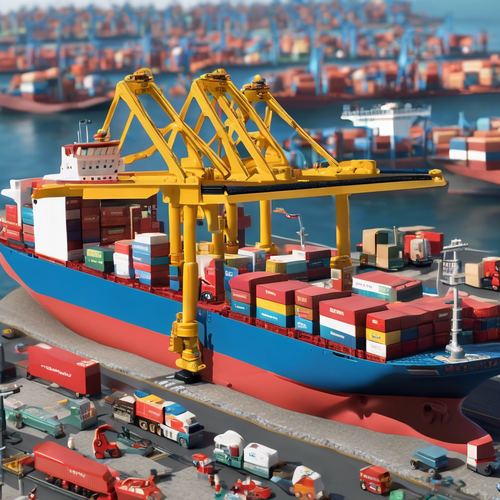Trump Tariff Challenge: Supreme Court’s Decision on Toy Importers Delays Uncertainty
In a move that sends ripples across the toy industry, the Supreme Court has decided against expediting a critical legal challenge concerning tariffs set during the Trump administration. 🎲 This decision underscores an ongoing battle where toy importers are grappling with additional costs imposed by tariffs that were meant to protect domestic industries but are instead complicating international trade. As uncertainty looms, the implications extend far beyond corporate boardrooms to the toy shelves of America. 🧸
Understanding the Tariff Landscape
At the heart of this challenge is the decision to impose tariffs on $370 billion worth of Chinese goods, integral to the toy industry’s supply chain. The tariffs—initially set at 10% and later raised to 25%—targeted products ranging from plush toys to action figures. 📊 For companies primarily reliant on imports, these tariffs have translated into higher costs, leading some to pass prices onto consumers, while others face shrinking margins. According to the Toy Association, 85% of toys sold in the U.S. are imported, creating substantial vulnerabilities to policy shifts.
The Everyman’s Budget: How Tariffs Affect Consumers
The burden of tariffs is often transferred to consumers, with escalating prices on beloved toy brands now making holiday budgets tighter for families across the nation. 🎁 In 2021 alone, the average price of toys increased by over 12%, largely attributed to soaring shipping costs and import tariffs. While companies strive to maintain their market share, parents are left grappling with the economic consequences that these increased prices bring.
“The reality is, this affects everyone from parents to toy manufacturers. The Supreme Court’s decision means we continue to exist in a state of ambiguity,” notes Sarah Ortner, a trade policy expert at the National Retail Federation. 🏬
A Closer Look at the Legal Battle
The legal challenge stems from a coalition of importers, spearheaded by the American Association of Importers and Exporters. They argue that the tariffs were not legally justified, contending that Congress never provided the President with the authority to impose them in such a sweeping fashion. 🔍 These arguments revolve around the legal premise of the 1974 Trade Act, which some interpret as a protective measure against capricious executive actions.
The Supreme Court’s decision to sidestep this case adds an alarming layer of complexity, as many importers await clarity from the judiciary while navigating the existing legal landscape, often fraught with expenses and uncertainties.
Global Supply Chain Implications
The ramifications of the tariffs ripple deeper than immediate consumer costs. The toy industry operates on a tightly integrated global supply chain, and increased tariffs have manifested as delays and shortages. 📦 Importers and manufacturers alike have expressed concerns over logistics disruptions, with some reporting that tariffs have led to longer lead times and difficulties in replenishing stock. This not only impacts toy availability but also affects businesses’ ability to forecast sales accurately.
What’s Next for Toy Importers? 🔮
As the Supreme Court continues to deliberate upon its calendar, toy importers are left pondering their next steps. Will they lobby for legislative changes? Will they seek alternative manufacturing hubs outside of China? 🌐 The need for diversification is clear, as businesses explore opportunities in countries like Vietnam and India where rising labor costs in China are prompting a migration shift.
Furthermore, the potential for new legislation aimed at reducing tariffs looms on the horizon. Proponents for reducing tariffs argue that a reduction could stimulate sales, ultimately benefiting consumers and the economy as a whole.
An Industry in Flux
As the case unfolds, it becomes increasingly evident that the toy industry stands at a crossroads. With the Supreme Court’s refusal to expedite their decision, toy importers are left to navigate an alarming ambiguity amid an evolving economic landscape. 🏗️ As company leaders strategize on how best to respond to these tariffs, innovation, adaptability, and advocacy will become crucial themes in overcoming the immediate challenges ahead.
The final chapter of the tariff saga remains unwritten, yet its impact holds the potential to reshape not just the toy industry but the broader landscape of international trade. As stakeholders rally for clarity, one thing remains certain: the toys may change but the complexities of economics and policy are here to stay. 🎉

